#70s afghanistan
Text
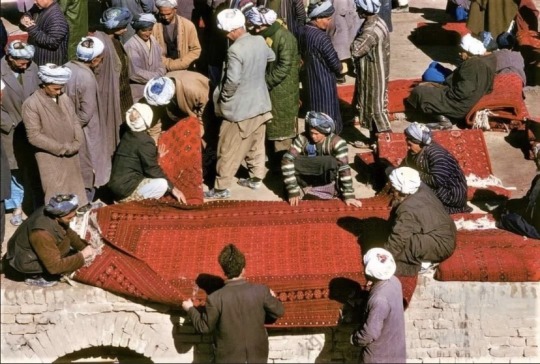
Uzbek And Turkmen Carpet Merchants In Faryab Province, Afghanistan, 1978
#afghanistan#uzbek#turkmen#afghan rugs#70s#70s Afghanistan#afghan#photography#own post#central asia#faryab
120 notes
·
View notes
Text

Afghanistan 1970s
©️ Ronald and Sabrina Michaud
280 notes
·
View notes
Text
ocelot's full biography from the mgs4 database:

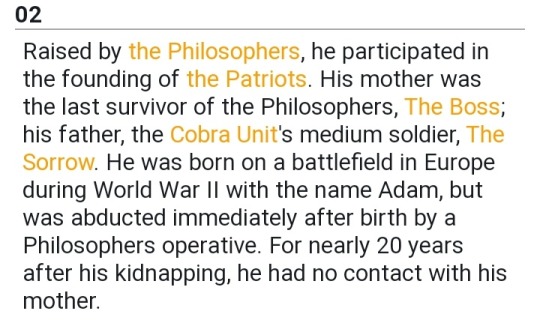






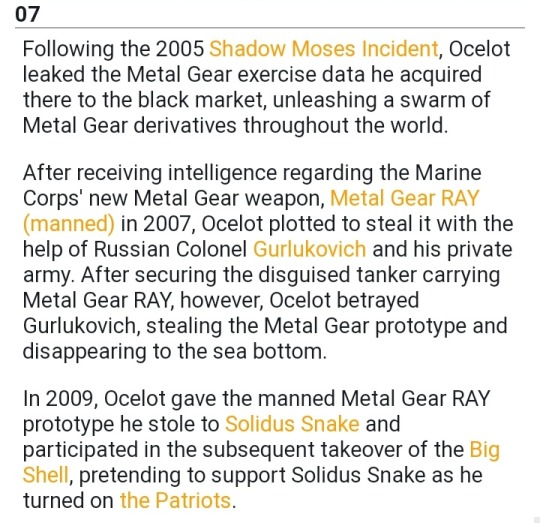

#mgs#metal gear solid#revolver ocelot#they didn't retcon his 'I fought wars in afghanistan mozambique eritrea and chad' by the time mgsv was released#those were all real conflicts#so I think for any gaps it's implied that he was involved with irl soviet military operations#you can probably use real world history to join the dots#he was in the gru for yeeeaaars#him meeting vulcan raven in siberia was never expanded upon but there's that too#was that the 90s idk but he was still in the gru then#post-ussr: ????#the 90s is a bigger mystery than the 70s imo#he didn't join foxhound until bb died in 1999.....#was he still in the gru when he was working with eva#I guess he left the gru to join foxhound#ETCETERA we know everything from there#mostly#why did the database tell us his post-ussr file was false then not correct it </3#LOL I bet I'm missing something really obvious#trying to make sense of retcons might also not be very clever idk#not enjoying my role as official ocelot biographer
61 notes
·
View notes
Text
War, my friends, where the only thing more twisted than the plot is the profit margins.
#black sabbath#heavy metal#metal#rock#70s#war#afghanistan#Gaza#Congo#Haiti#Sudan#navy#me#personal#writing
0 notes
Text
From the river to the sea, Palestine will be free 🇵🇸 🍉
Free Palestine, Congo, Sudan, Yemen, Tigray, Syria, Haiti, Hawai’i, Puerto Rico, Tibet.
I've made a list for some donation and free resources for those who need them.
Donation Pages and other resources you can help support
(Donation Page for Palestine, Syria, Lebanon and other refugee camps)
(The Palestine Children's Relief Fund)
(Donations go towards Palestine, Lebanon and Jordan)
(Purchasing eSims allows people within Gaza to connect to the outside to communicate with their families and also to show what’s happening within Gaza)
(A donation site which provides urgently needed humanitarian aid in moments of crisis and conflict in 70 different countries.)
(A donation page for Sudan Relief)
(A donation page to send water, food and aid to those who are living in Yemen.)
Other ways you're able to help for free, contact your local senators, boycott, inform yourself and others! Anything you are able to do is able to help.
Inform yourself about Sudan, South Sudan, Palestine, Somalia, Uyghurs, Congo, Libya, Afghanistan, Yemen, Syria and Morocco
Inform yourself about Haiti, Hawai'i, Puerto Rico, Tigray, Tibet, Uighurs, West Papau:
(A collection of resources for organizers and anyone who wants to learn more about Palestine.)
(A free daily button you can click to help the people of Palestine and other areas of crisis.)
(A comprehensive list of brands to boycott and reasons why.)
(Another list of brands to boycott.)
(Contact your local US senator.)
(Contact your local Canadian parliament)
(Contact your local UK parliament)
You can use this call script if you call your local US government.
Call Script: My name is {Your Name}. I am a constituent of {Representative's Name}. I am calling to ask that the Representative add their name to the Ceasefire Now resolution led by Representatives Cori Bush and Rashida Tlaib, regarding the unfolding crisis in Gaza.
It is absolutely urgent that the Representative demand a ceasefire, and that they call on Israel to allow humanitarian assistance into Gaza. The only way forward is addressing the root causes of violence: Israeli military occupation and apartheid, and ending U.S. complicity in this oppression.
#anything will help#from the river to the sea#strike for gaza#free palestine#congo#sudan#yemen#tigray#syria#haiti#hawai'i#puerto rico#tibet#resources#links
941 notes
·
View notes
Text



many of him
snake eater 1 + 2 (age 20): self explanatory. military buzzcut. parade dress. scarf. with and without beret, for funsies. iconic.
portable ops (age 26): i drew him once before in this outfit but i think he was doing three piece suits throughout the latter half of the 60s and into the early 70s. and he kept the sides of his head shaved but started growing out the top part a little. i know portable ops isn’t technically canon but i think that he definitely killed the DCI to get the other half of the legacy for zero. pomade era!
les enfants terribles project (age 28): baby’s first facial hair. in my mind this was around the time he first got into drugs because the situation was so stressful and also it was the 70s.
early 9 yr gap (30s): i don’t have a specific timeframe for this but the point of this entry and the next are to juxtapose what his hair looks like when he takes care of it and what it looks like when he just lets it grow out and get awful. in my head if he were to style his hair in any of the upcoming entries it would have those swoopy wavy 70s curls just like here.
soviet invasion of afghanistan (age 35): i think this is where he first started getting Bad. he makes a few references to the invasion in the mgsv tapes and he just sounds so sick and tired of it.
1982 (age 38): i just stuck this in for my own personal enjoyment but in my mind he let his hair get so long and ratty and nasty before finally hacking it all off with kitchen shears over the sink just before mgsv. (insert post: love this character. love to see them at the lowest point in their life)
phantom pain (age 40): i think all instances of the scarf are the same one he’s had since the 60s. he takes good care of his clothing
foxhound 199X (50s): to be honest i have NO idea what ocelot was doing in the 90s. hopefully he got clean. i think it would be funny if he stopped by foxhound every so often moonlighting as like a horseback riding instructor or something. kaz would love that i’m sure
shadow moses (61): in my mind his hair is curled so beautifully in mgs1, it just is to me
stealing ray (63): i think it would be funny if liquid made him pierce his ears. i love giving him a braid when i draw mgs2 ocelot i KNOW he doesn’t have one but in my mind he does
guns of the patriots (70): no red in his outfit tragic. also i think he straightened his hair for this game. slay?
#mgs#revolver ocelot#scribble#i tried to find a balance btwn his mgs1-3+4 facemold and the v facemold......#anyway yeah. i think 1979-1984 hit him like a freight train#PLEASE ASK ME ABOUT THESE if you feel inclined. i have so many thoughts
222 notes
·
View notes
Text
The Best News of Last Week - April 3, 2023
Kentucky Legalizes Medical Marijuana in Bipartisan Vote After Decade of Failed Attempts

The state of Kentucky has legalized the use of medical marijuana. The bill received final passage on Thursday. Democratic Gov. Andy Beshear signed it into law Friday morning after a decade of failed attempts in the state legislature.
The news makes Kentucky at least the 38th state in the U.S. to legalize medical marijuana.
Now Indiana is surrounded by weed states. The encirclement is complete 😂
2. The Maryland House of Delegates voted Saturday to approve the Trans Health Equity Act

The Maryland House of Delegates voted Saturday to approve the Trans Health Equity Act — a bill that just a year ago disappeared from the chamber’s agenda ahead of a floor vote.
The bill would require Maryland Medicaid, beginning on Jan. 1, 2024, to provide coverage for additional gender-affirming treatments, which are currently disallowed in the state’s plan but commonly covered by private insurance. The expanded treatments include hormone therapy, hair alteration, voice therapy, physical alterations to the body, and fertility preservation.
3. FDA approves over-the-counter Narcan. Here's what it means

The approved nasal spray is the best-known form of naloxone. It can reverse overdoses of opioids, including street drugs such as heroin and fentanyl and prescription versions including oxycodone.
Making naloxone available more widely is seen as a key strategy to control the nationwide overdose crisis. Effects begin within two minutes when given intravenously, and within five minutes when injected into a muscle. The medicine can also be administered by spraying it into a person's nose.
4. Boston expands tuition-free community college program to all residents
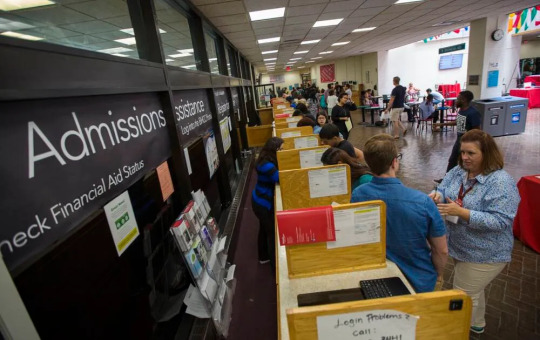
Boston has expanded its tuition-free community college program to include all city residents regardless of age, income or immigration status.
Starting this fall, any city resident will be eligible to pursue an associate’s degree or certificate at one of six partnering local institutions without paying to attend. The program also includes a $250 stipend for incidental expenses each semester for up to three years, and up to $2,500 of debt relief for students whose account balances are keeping them from re-enrolling.
5. First cheetah cubs born in India since extinction 70 years ago

India has welcomed the birth of four cheetah cubs - more than 70 years after the animals were declared officially extinct there.India's environment minister announced the good news, calling it a "momentous event".
The country has been trying to reintroduce the big cats for decades, and last year brought eight cheetahs over from Namibia as part of the plan. Another 12 cheetahs were brought to India from South Africa last month.
6. BBC education show in Afghanistan helps children banned from school

The BBC has launched a new education programme for children in Afghanistan who are banned from school.It is aimed at children aged 11 to 16, including girls whose secondary education has been stopped by the ruling Taliban.
The weekly programme is called Dars, which means lesson in Dari and Pashto, Afghanistan's official languages. It is hosted by BBC Afghan female journalists who were evacuated from Kabul during the 2021 Taliban takeover.
Each new weekly half-hour episode of Dars will air four times a day, Saturday to Friday, on the newly launched BBC News Afghanistan channel.
7. A Trans Creator Has Raised Over 1.5 Million for Trans Healthcare on TikTok Live

Transgender TikTokers are celebrating Trans Day of Visibility by raising over $1.5 million for gender-affirming care around the world.
Mercury Stardust — a DIY TikToker and trans advocate who calls herself the “Trans Handy Ma’am” — raised $120,000 last year in a livestream for the mutual aid nonprofit Point of Pride, which maintains funds for surgeries, hormone therapy, and free binders and gaffs. This year, Stardust and cohost Jory, a.k.a. AlluringSkull, set themselves a goal of raising $1 million in a planned 30-hour live stream…and then smashed that milestone less than six hours after starting the stream Thursday evening.
----
I have started a Youtube channel with wholesome videos I can find on the internet. Check it out :)
That's it for this week :)
This newsletter will always be free. If you liked this post you can support me with a small kofi donation:
Buy me a coffee ❤️
Also don’t forget to reblog
436 notes
·
View notes
Text
Unconventional warfare constituted the US method of choice to weaken or overthrow unwanted governments. It was designed to “roll back” governments deemed detrimental to US interests and those of global capital. Such strategies depended almost entirely on para-institutional complexes. US agencies liaised with and coordinated complexes of local collaborators, insurgents, militias, “secret” armies, mercenaries, private air-military contractors and other para-institutional forces to influence the political and economic orientation of foreign states. These efforts to weaken unwanted foreign governments or towards regime change extended around the world to countries such as Albania (1949–53), China (1949–60s), Burma (Myanmar) (1951–53), Tibet (1959–60s), Iran (1953), Guatemala (1954), Syria (1956–57), Egypt (1957), Indonesia (1957–58 and 1965), Iraq (1963), North Vietnam (1945–73), Cambodia (1955–70), Laos (1958–63), Cuba (1959–present), Chile (1964–73), Greece (1967), Bolivia (1971), Zaire (1975), Angola (1975, 1980s), Seychelles (1979–81), Libya (1980s), Grenada (1983), South Yemen (1982–84), Nicaragua (1981–90), (Afghanistan 1979–89), Fiji (1987), among others.
Andrew Thomson, Outsourced Empire: How Militias, Mercenaries, and Contractors Support US Statecraft
130 notes
·
View notes
Text
Charlie’s message along with the links and a little note at the end


Original Post
https://x.com/insidetheslime/status/1750576531569553747?s=46&t=zq839cegjCBSp5j3Fy48oA
#charlie slimecicle#qsmp#mcyt#palestine#Gaza#ceasefire#global strike#important#qsmp charlie slimecicle#qsmp with palestine
135 notes
·
View notes
Photo

Muslim population (% of their total population)
by plotset
Mauritania 🇲🇷 - 99.9%
Somalia 🇸🇴 - 99.8%
Tunisia 🇹🇳 - 99.8%
Afghanistan 🇦🇫 - 99.6%
Iran 🇮🇷 - 99.4%
Turkey 🇹🇷 - 99.2%
Yemen 🇾🇪 - 99.1%
Algeria 🇩🇿 - 99%
Morocco 🇲🇦 - 99%
Maldives 🇲🇻 - 98.4%
Niger 🇳🇪 - 98.3%
Palestine 🇵🇸 - 97.5%
Jordan 🇯🇴 - 97.2%
Saudi Arabia 🇸🇦 - 97.1%
Sudan 🇸🇩 - 97%
Libya 🇱🇾 - 97%
Azerbaijan 🇦🇿 - 96.9%
Tajikistan 🇹🇯 - 96.7%
Pakistan 🇵🇰 - 96.5%
Uzbekistan 🇺🇿 - 96.5%
Iraq 🇮🇶 - 95.7%
Syria 🇸🇾 - 93%
Egypt 🇪🇬 - 92.3%
Bangladesh 🇧🇩 - 90.4%
Indonesia 🇮🇩 - 87.2%
Kyrgyzstan 🇰🇬 - 80%
Qatar 🇶🇦 - 77%
UAE 🇦🇪 - 76%
Kuwait 🇰🇼 - 74%
Kazakhstan 🇰🇿 - 70%
Malaysia 🇲🇾 - 61%
Albania 🇦🇱 - 58%
Lebanon 🇱🇧 - 57%
Tanzania 🇹🇿 - 35%
Israel 🇮🇱 - 18%
Singapore 🇸🇬 - 14%
India 🇮🇳 - 14%
Russia 🇷🇺 - 13%
France 🇫🇷 - 8.8%
UK 🇬🇧 - 6.3%
Germany 🇩🇪 - 5.7%
Greece 🇬🇷 - 5.7%
Italy 🇮🇹 - 4.8%
Canada 🇨🇦 - 3.2%
Australia 🇦🇺 - 2.6%
USA 🇺🇲 - 1.1%
Argentina 🇦🇷 - 0.9%
Brazil 🇧🇷 - 0.36%
Japan 🇯🇵 - 0.1%
North Korea 🇰🇵 - 0.01%
Vatican City 🇻🇦 - 0%
116 notes
·
View notes
Text
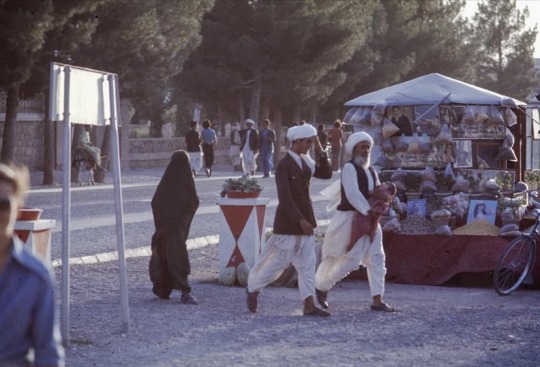
Herat, Afghanistan 1974
60 notes
·
View notes
Text
(JTA) — The Jewish French-Moroccan journalist Ruth Elkrief — who has delivered TV news in France for over 30 years — found herself at the center of the story when she was placed under police protection in December.
Elkrief received the security detail after an online attack from the far-left politician Jean-Luc Mélenchon. In a post on X, formerly Twitter, Mélenchon charged her with hatred against Muslims after she challenged one of his colleagues during an on-air interview about the Israel-Hamas war.
“Ruth Elkrief. Manipulator. If we don’t insult Muslims, this fanatic is outraged,” Mélenchon said of the journalist, adding that she “reduces all political life to her contempt for Muslims.”
Mélenchon, leader of the far-left party La France Insoumise, known as LFI or, in English, France Unbowed, posted his comments moments after Elkrief conducted a heated interview with LFI lawmaker Manuel Bompard on her TV channel, La Chaîne Info, on Dec. 3. Elkrief asked Bompard about his party’s refusal to condemn Hamas and its characterization of the militants as “resistance fighters” after their Oct. 7 attacks on Israel. She also asked about the party leaders’ decision to describe Israel’s war in Gaza as a “genocide,” and whether this language might provoke civil unrest in France.
In response, Bompard referenced warnings from the United Nations that the Palestinian people were at risk of genocide without a ceasefire in the Israel-Hamas war. Elkrief in turn quoted the French historian Vincent Duclert, who has said of Gaza’s high death toll, “Even a frightening humanitarian situation is not enough to qualify as genocide.”
Elkrief, who says she “came out” as Jewish to her viewers after Oct. 7, told the Jewish Telegraphic Agency that she merely did her job of debating an interviewee and dismissed Mélenchon’s accusation of Islamophobia. According to Elkrief, she was challenging the positions of France’s far-left political class — not French Muslims, whom she does not believe to be well represented by LFI even though nearly 70% of them voted for the party in the 2022 national elections.
“Most French Muslims don’t support Hamas and they don’t support all these catastrophes,” she said. “They can of course fight for a Palestinian state — and I agree with that — but they are not agreeing with Hamas and terrorism.”
Nonetheless, Mélenchon’s charge prompted a wave of threats against the Jewish journalist and raised an alarm for French Interior Minister Gérald Darmanin. Darminin said he decided to provide police protection because Mélenchon “put a target on the back of Ruth Elkrief, who already faced many threats as a journalist [and] was just doing her job.”
The government was on high alert for domestic attacks responding to the Israel-Hamas war. Mélenchon’s statement came the day after a knife-wielding man killed a German tourist and injured two others near the Eiffel Tower, telling police he was angry about the fate of Gaza and “so many Muslims dying in Afghanistan and in Palestine.”
While it’s typical for domestic attacks to increase in France during conflicts in Israel and the Palestinian territories, a recent surge in antisemitism has been especially pronounced. Darmanin reported over 1,500 antisemitic incidents in the six weeks after Oct. 7 — a three-fold increase from the total documented in all of 2022 — including desecrated Jewish graves and the stabbing of a Jewish woman in Lyon whose door was marked with a swastika.
Whether or not Mélenchon planned for an antisemitic backlash against Elkrief, his choice of language on X was loaded, according to Dorian Bell, a professor researching France’s history of race and antisemitism at the University of California, Santa Cruz.
“To accuse a Jewish member of the media of ‘manipulation’ arguably draws on long-standing antisemitic tropes about Jewish control of the media,” Bell told JTA.
Mélenchon’s words landed in the middle of a polarizing fallout from the Israel-Hamas War in France, home to one of the largest Muslim populations in Europe (about 5 million) and the world’s third-largest Jewish community after Israel and the United States (about 500,000).
French authorities met the wave of antisemitic incidents with a crackdown on pro-Palestinian rallies. Darminin attempted to impose a blanket ban on demonstrations denouncing Israel’s military campaign, which he declared “likely to generate disturbances to public order.” Although the ban was overturned, local authorities can still block protests on a case-by-case basis, prompting an outcry from some French citizens who accuse the government of suppressing free expression in support of Palestinians.
France’s Jews and Muslims have both experienced a painful recent history, including institutionalized discrimination against Muslim immigrants and Islamic terrorist attacks that targeted a Jewish school in 2012 and a Jewish supermarket in 2015. The reverberations of the Israel-Hamas war in France have further shaped a perception, solidifying for decades, that the country’s antisemitism and Islamophobia can be collapsed into a Jewish-Muslim conflict.
Michel Wieviorka, a Jewish French sociologist who studies violence and terrorism, told JTA there is no evidence that antisemitic incidents are predominantly driven by French Muslims. In fact, most of the perpetrators behind the recent spike in incidents — particularly non-violent ones, such as property damage and graffiti — are unknown. Between Oct. 7 and Nov. 15, 1,518 reports of antisemitic acts resulted in 571 arrests, Darmanin announced in November.
“Nobody knows exactly who is acting,” said Wieviorka. “Many people believe that most of these acts come from people with immigrant origins, but they can also come from the extreme right. For instance, I know some cases of destroyed graves in Jewish cemeteries — these attacks usually come from the extreme right, not from Muslims or Arabs.”
For Elkrief, Oct. 7 marked a turning point both personally and professionally. The 63-year-old journalist was born in Meknes, Morocco, and moved to France with her family when she was a teenager. (A remaining synagogue in Meknes bears her family name.) She started her long career at the French desk of the Associated Press in 1984. She spent 14 years at TF1, the oldest TV channel in France, helped found two news channels — LCI in 1993 and BFM TV in 2005 — and has hosted an LCI show about French politics since 2021.
She is also the great-niece of Chalom Messas, who was Morocco’s chief rabbi in the 1960s and 1970s until immigrating to Israel in 1978, when he became the chief Sephardic rabbi of Jerusalem. Elkrief is part of France’s small Liberal Jewish community and maintains Jewish traditions, keeping kosher at home and gathering the family for Shabbat evenings — including her two daughters and a newborn granddaughter. (Liberal Judaism in France is most similar to Reform Judaism in the United States.)
In all her years on air, Elkrief never spoke about her Jewish identity on TV before Oct. 7. She felt obliged to keep a “poker face” about her private life until the Hamas attacks, when she was moved to share more — fueled by her fear of rising antisemitism and enabled by her recent position as a commentator.
“I could explain where I was coming from and how much I was anxious about antisemitism in France after the 7th of October,” said Elkrief. “I called it my ‘coming out.’ I’ve since had some opportunities to speak about the conflict as a French editorialist, but also as a French Jew, for the first time in my life.”
On Oct. 9, Elkrief told her viewers that she was born in Morocco and lived there until early 1974, when she was 13. Her parents, both descended from generations of Moroccan Jews, feared regional tensions in the aftermath of the 1973 Yom Kippur War, when Israel fended off attacks from Arab countries. They went to France because they believed their children would have a safer life there.
“When I came at that time, I couldn’t imagine that there would be antisemitism in France,” Elkrief told JTA.
Worried about antisemitism gaining currency in French politics, Elkrief has criticized far-left factions heavily on her show. In addition to her dispute with Bompard, she blasted LFI for boycotting a march against antisemitism in November.
France’s traditional left, which encompasses socialist and communist parties, has nearly collapsed and left the more radical, controversy-dogged LFI in power, said Wieviorka. Meanwhile, the far-right National Rally — including anti-immigration leader Marine Le Pen, whose father and predecessor is a convicted Holocaust revisionist — has escaped the same censure for antisemitism during Israel’s war on Gaza, largely by proclaiming support for Israel.
“My idea is that they hate Arabs, Islam and migrants so much that they consider they have to be fighting on the other side,” said Wieviorka.
Bell cautioned against focusing exclusively on what is often described as the “new antisemitism” on the far left. The “old antisemitism” on the far-right never went away, he argued, but has only been masked by pro-Israel sentiment. Indeed, Bell said that historically antisemitic tropes — particularly those depicting an invasion of Jews too different or unassimilable to become truly French — have merely been recycled by the far-right to stigmatize Muslim immigrants.
And even if this narrative now primarily targets Muslims, Jews are not free from the conspiratorial discourse, said Bell. He pointed out that while members of the National Rally may not explicitly attack Jews, they sometimes use euphemisms for Jewish “elites” whom they blame for engineering mass migration, in a French version of the “great replacement” theory that has fueled violence around the world.
“When Marine Le Pen talks about ‘cosmopolitan nomads’ who are encouraging migration and destroying European nations, she has a tendency to mention Jewish French political figures — Jacques Attali, Daniel Cohn-Bendit,” said Bell. “I don’t think that’s an accident.”
Elkrief and Mélenchon have one thing in common: They are both among the estimated 836,000 Moroccan immigrants in France. (Mélenchon, 72, was born in Tangier and lived there until he was 12.) Elkrief said she is a strong believer in the “Republic,” which in France denotes an idea that there are only equal individuals in the public sphere, no minorities or ethnic groups. The country’s principle of “laïcité,” loosely and imprecisely translated as “secularism,” enshrines in French law the state’s neutrality between religions and confines religious symbols and practices to the private sphere — a pillar that Elkrief believes can protect France from discrimination against both Jews and Muslims.
“I don’t want to be defined by my religion, and I don’t want other French people to be defined by their religion,” said Elkrief. “I believe in the French Republic staying a space of debate, where religion is a private question.”
53 notes
·
View notes
Text
“Nearly everything can be antisemitism!”
First of all- If you are constantly being accused of antisemitism, please examine what you are putting out into the world. Seriously- learn the most insidious examples of antisemitism, carefully engineered to fly under the radar and interject itself in movements of social progress.
This does not excuse or explain the actions of the Israeli government. Acknowledging these simple facts does not hurt any activism for Palestinians. Researching these things will help you in your activism so you can bring in more Jewish people and their allies, who might have at one point felt VASTLY uncomfortable in spaces where antisemitism was previously allowed without comment.
Do certain Pro Israel/Netanyahu figureheads “use” antisemitism as a means to discredit and distract genuine advocacy for Palestine? Yes and that is absolutely disgusting. But in order for that usage to be effective, it has to be there in the first place.
Edited to add charities I’ve personally donated to and trust. Please add more in the comments
#i/p conflict#i/p#israel#palestine#jewish#jumblr#antisemitism#tw antisemitism#anti netanyahu#fromgoy2joy thoughts
67 notes
·
View notes
Text
Who are the Mizrahim? History 101
Where do Jews come from and what is the difference between Sephardim and Mizrahim? Loolwa Khazzoom gives this succint explanation for the Jewish Virtual Library:
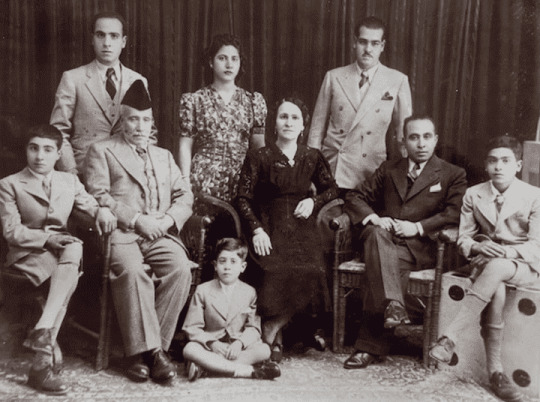
A Baghdadi Jewish family
Regardless of where Jews lived most recently, therefore, all Jews have roots in the Middle East and North Africa. Some communities, of course, have more recent ties to this region: Mizrahim and Sephardim, two distinct communities that are often confused with one another.
Mizrahim are Jews who never left the Middle East and North Africa since the beginnings of the Jewish people 4,000 years ago. In 586 B.C.E., the Babylonian Empire (ancient Iraq) conquered Yehudah (Judah), the southern region of ancient Israel.
Babylonians occupied the Land of Israel and exiled the Yehudim (Judeans, or Jews), as captives into Babylon. Some 50 years later, the Persian Empire (ancient Iran) conquered the Babylonian Empire and allowed the Jews to return home to the land of Israel. But, offered freedom under Persian rule and daunted by the task of rebuilding a society that lay in ruins, most Jews remained in Babylon. Over the next millennia, some Jews remained in today’s Iraq and Iran, and some migrated to neighboring lands in the region (including today’s Syria, Yemen, and Egypt), or emigrated to lands in Central and East Asia (including India, China, and Afghanistan).
Sephardim are among the descendants of the line of Jews who chose to return and rebuild Israel after the Persian Empire conquered the Babylonian Empire. About half a millennium later, the Roman Empireconquered ancient Israel for the second time, massacring most of the nation and taking the bulk of the remainder as slaves to Rome. Once the Roman Empire crumbled, descendants of these captives migrated throughout the European continent. Many settled in Spain (Sepharad) and Portugal, where they thrived until the Spanish Inquisition and Expulsion of 1492 and the Portuguese Inquisition and Expulsion shortly thereafter.
During these periods, Jews living in Christian countries faced discrimination and hardship. Some Jews who fled persecution in Europe settled throughout the Mediterranean regions of the Ottoman (Turkish) Empire, as well as Central and South America. Sephardim who fled to Ottoman-ruled Middle Eastern and North African countries merged with the Mizrahim, whose families had been living in the region for thousands of years.
In the early 20th century, severe violence against Jews forced communities throughout the Middle Eastern region to flee once again, arriving as refugees predominantly in Israel, France, the United Kingdom, and the Americas. In Israel, Middle Eastern and North African Jews were the majority of the Jewish population for decades, with numbers as high as 70 percent of the Jewish population, until the mass Russian immigration of the 1990s. Mizrahi Jews are now half of the Jewish population in Israel.
Throughout the rest of the world, Mizrahi Jews have a strong presence in metropolitan areas — Paris, London, Montreal, Los Angeles, Brooklyn, and Mexico City. Mizrahim and Sephardim share more than common history from the past five centuries. Mizrahi and Sephardic religious leaders traditionally have stressed hesed (compassion) over humra (severity, or strictness), following a more lenient interpretation of Jewish law.
Despite such baseline commonalities, Middle Eastern and North African Mizrahim and Sephardim do retain distinct cultural traditions. Though Mizrahi and Sephardic prayer books are close in form and content, for example, they are not identical. Mizrahi prayers are usually sung in quarter tones, whereas Sephardic prayers have more of a Southern European feel. Traditionally, moreover, Sephardic prayers are often accompanied by a Western-style choir in the synagogue.
Mizrahim traditionally spoke Judeo-Arabic — a language blending Hebrew and a local Arabic dialect. While a number of Sephardim in the Middle East and North Africa learned and spoke this language, they also spoke Ladino–a blend of Hebrew and Spanish. Having had no history in Spain or Portugal, Mizrahim generally did not speak Ladino.
In certain areas, where the Sephardic immigration was weak, Sephardim assimilated into the predominantly Mizrahi communities, taking on all Mizrahi traditions and retaining just a hint of Sephardic heritage — such as Spanish-sounding names. In countries such as Morocco, however, Spanish and Portuguese Jews came in droves, and the Sephardic community set up its own synagogues and schools, remaining separate from the Mizrahi community.
Even within the Mizrahi and Sephardi communities, there were cultural differences from country to country. On Purim, Iraqi Jews had strolling musicians going from house to house and entertaining families (comparable to Christmas caroling), whereas Egyptian Jews closed off the Jewish quarter for a full-day festival (comparable to Mardi Gras). On Shabbat, Moroccan Jews prepared hamin (spicy meat stew), whereas Yemenite Jews prepared showeah (spicy roasted meat), among other foods.
Read article in full
The post Who are the Mizrahim? History 101 appeared first on Point of No Return.
Read in browser »
71 notes
·
View notes
Note
hi! i’ve been hearing about the crisis going on in haiti, and i wanted to ask, do you know any ways to help people in haiti? like credible places to donate, any petitions, etc?
hey anon, this acc does mean a lot that ur trying to be helpful thats very sweet of u and like i said does acc mean a LOT to me🫶🏽🫶🏽🫶🏽
to answer ur question, as far as ive been looking out for there isnt really like, a SPECIFIC fundraiser for haiti about whats going on rn unfortunately, BUTTT
doctors without borders is already like in port au prince rn, and has been there for quite a bit now (theyre also in gaza, sudan, afghanistan, etc etc) and if i remember correctly, they could use some more materials and do plan on ramping up their efforts, if u wanna read more about it just click this link
and heres where u can donate, the minimum u can donate is 5 dollars so if you cant donate that much right now, it would mean a lot if you could at least share it or something<333
if i find a specific fundraiser ill post that when i can<33
38 notes
·
View notes
Note
Hihi! I’m just curious, could you tell me how supporting people who are going through like the current worst humanitarian crisis right now is antisemitism?
“Entire Gaza population now 100 percent severely food insecure
US Secretary of State Antony Blinken highlighted Gaza’s deteriorating food situation where hundreds of thousands of people face famine.
‘According to the most respected measure of these things, 100 percent of the population in Gaza is at severe levels of acute food insecurity. That’s the first time an entire population has been so classified,’ said Blinken during an official visit to the Philippines.
‘We also see, according to the United Nations, 100 percent the totality of the population is in need of humanitarian assistance. Compare that to Sudan; about 80 percent of the population there is in need of humanitarian assistance; Afghanistan, about 70 percent.’”
Source: https://www.aljazeera.com/news/liveblog/2024/3/19/israels-war-on-gaza-live-israel-holds-al-jazeera-reporter-for-12-hours?update=2784156
I don’t hate Jewish people, I just want to support people in need. And I’m not Jewish or anything so I’m not going to pretend I know all about being Jewish, but isn’t being kind and helping people part of what the Jewish religion is about? Doesn’t causing the first case of 100% food insecurity go directly against that? I do not hate all Jewish people or all Israelis. I simply hate to see an entire population suffer like this, so could you please explain to me how supporting people in such need is antisemitism?
Al Jazeera is an antisemetic "source"
31 notes
·
View notes